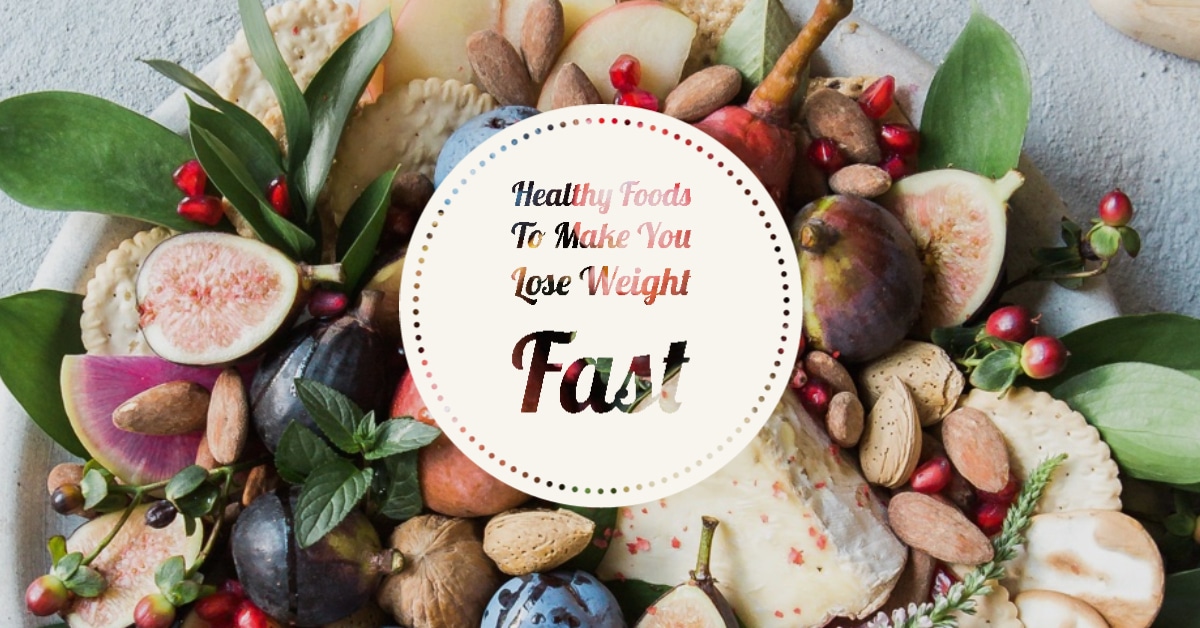
How Eating Fiber Can Help You Lose Weight
Americans spend 33 billion dollars every year on weight-loss products, many of which are not backed by scientific research. Why not save your money and avoid disappointment by choosing a proven weight-loss substance that’s readily available in a wide variety of foods? It’s called fiber. When it comes to fighting fat, fiber packs a powerful punch. Fiber-rich foods are inexpensive, and it’s easy to work them into your daily meals. Plus, a diet that’s high in fiber not only will help you lose weight, but it will also improve your prospects for better health and longevity, giving you more time to show off that svelte figure.
Table of Contents
How Fiber Fights Fat
There’s more and more evidence to suggest that eating a high-fiber diet can help you lose weight. When researchers at Tufts University reviewed published studies on the effects of fiber on hunger, they found that people who consumed an additional 14 grams of fiber a day ended up eating 10 percent fewer calories than before. In another study, researchers at University Hospital in London, Ontario, used detailed food diaries to compare the fiber intake of study participants at different weights. They found that those who maintained a healthy weight ate 30 percent more fiber than the overweight participants. Fiber helps people to lose weight in two ways. For one thing, it provides bulk, which makes you feel full. But fiber also slows digestion, which makes you feel satisfied longer.
What and Where Is It?
We may joke about fiber, but many of us aren’t sure exactly what it is or how to be certain we’re getting enough of it. Fiber is the indigestible portion of plant foods, most of which passes through our system unchanged. Since we lack the enzymes to digest fiber, we can’t absorb any calories from it. But we can reap a multitude of health benefits. There are two types of fiber: water-insoluble and water-soluble. The former, found in wheat bran and the skins of some fruits and vegetables, exits the body basically unchanged.
It provides bulk and helps regulate the bowels. Water-soluble fiber is found in oats, beans, lentils, barley, and most fruits and vegetables. This type of fiber absorbs water in the digestive tract, which is what helps you feel full and slows your digestion. The average adult gets only about half of the recommended 20 to 35 grams of fiber a day. Why? Our way of life has changed over the past 20 years, and so have our diets. We’re eating more meals away from home and on the run and we’re paying less attention to making healthy food choices. Fortunately, it’s easier than you think to pump up the fiber in your diet. Use the fiber counter and daily menus, opposite, to increase your fiber intake.
Health Benefits of Fiber
There’s plenty of evidence that a high-fiber diet can protect you from a number of major diseases.
Heart disease: Nurses’ Health Study data point to a reduction in coronary heart disease in women whose diets contained the highest amounts of fiber. Fiber may lower LDL (bad) cholesterol and blood insulin levels and may reduce the risk of blood clots. The American Heart Association’s most recent dietary guidelines call for eating fiber-rich whole grains, fruits, and vegetables.
Type 2 diabetes: As obesity rates have risen, so have rates of Type 2 diabetes. Fiber helps prevent and treat both conditions. By slowing down the digestive process, fiber helps lower blood sugar and insulin levels. In a Harvard School of Public Health study that looked at more than 65,000 women, those who ate the most fiber had a 30 percent reduced risk of developing Type 2 diabetes compared with the women who ate the lowest amount of fiber.
Cancer: There’s strong evidence linking regular consumption of fiber-rich foods, particularly whole grains, with a reduction in cancer risk. Along with fiber, whole grains contain phytochemicals, selenium, and vitamin E, all of which are believed to have anti-cancer properties. To help reduce your risk of cancer, the American Cancer Society recommends eating five or more servings of fruits and vegetables daily and consuming whole grains rather than refined grains.
Soluble Fiber Can Help You Lose & Prevent Belly Fat
Fiber is often divided into two categories — insoluble and soluble fiber. They differ in how they interact with water in your body.
Insoluble fiber does not mix with water and acts mostly as a bulking agent to help form stool and pass it through the gut. This can help with constipation.
Soluble fiber, such as beta-glucan and glucomannan, mixes with water to form a viscous, gel-like substance that slows down how fast the stomach releases digested food into the gut.
Eating more soluble fiber can also help you lose belly fat and prevent belly fat gain. One study linked a 10-gram increase in daily soluble fiber intake to a 3.7% lower risk of gaining belly fat.
Several other studies also show that people who eat more soluble fiber have a lower risk of belly fat.
Add Fiber — Carefully
- If you have any illnesses, especially intestinal problems, be sure to check with your physician before increasing your fiber intake.
- If you’ve been eating only 10 grams of fiber a day for years, it’s not a good idea to increase it to 30 grams all at once. This can cause gas, bloating and possibly diarrhea. Instead, up your intake by a few grams of fiber each week. This allows your digestive system to adjust to your new way of eating.
- Increase your intake of water and other fluids, as well. Too little fluid with more fiber may cause constipation.
- A daily multivitamin/mineral supplement is important when following a high-fiber plan, as the diet may decrease the absorption of certain nutrients.
- If you’re not getting the recommended 1,000 mg of calcium through foods (our menus provide approximately this amount), consider a supplement.
What About Supplements?
Most experts agree that the best way to up your fiber intake is through foods since they contain many other nutrients that fight disease. However, in many of the studies conducted on the weight-loss benefits of fiber, similar results were found whether the fiber was from food or supplements. Try to take in as much fiber as you can through foods, and use a supplement to make up the difference if necessary.
It’s Easier Than You Think
Here’s how you can go from eating just 5 grams of fiber a day to getting the recommended 30 grams:
Instead Of Grams of Fiber Choose Grams of Fiber At Breakfast
1 cup cornflakes 1 2/3 cup bran-flake cereal 6
At Lunch
2 slices white bread 1 2 slices seven-grain bread 6
At Afternoon Snack Time
6 saltine-type crackers 1 2 high-fiber rye crispbreads 4
At Dinner
1/2 cup canned green beans 1 1/2 cup steamed broccoli 2 1 cup white rice 1 1 cup bulgur** wheat 8
At evening Snack Time
1/2 cup ice cream 0 1 apple 4
Total: 5 Grams Total: 30 Grams
Bulgur, a Middle Eastern grain, is easier to cook than rice. Look for it the rice section of your supermarket and at health food stores. Cook in chicken broth for added flavor.
Kids and Fiber
More than half of U.S. children do not meet their recommended daily fiber quota. Many of the ailments afflicting adults, including obesity and Type 2 diabetes, are showing up in greater numbers in our younger population, too. Any child over the age of 2 should eat the amount of fiber equal to their age plus five. For example, an 8-year-old should be eating 13 grams of fiber a day.






